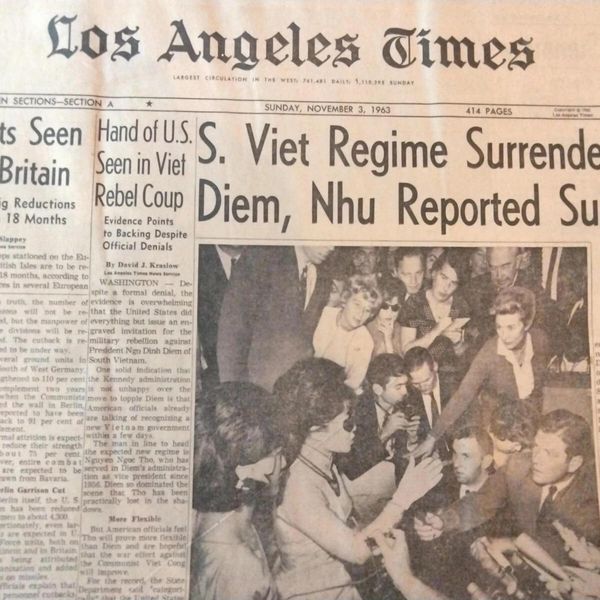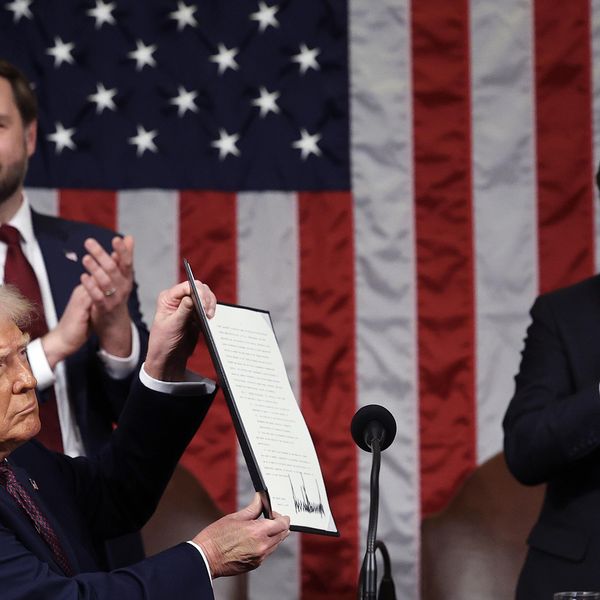As former Vice President Joe Biden has leapt into front-runner status in the Democratic presidential primary, it’s worth taking a closer look at his foreign policy outlook published by Foreign Affairs back in January.
On the subject of U.S. strategy toward China, his approach is commendably reasonable. Unlike much of the recent commentary from the Trump administration and the Washington foreign policy community, Biden does not frame the competition with China in "full-spectrum" or new cold war terms. In fact, he goes out of his way to frame his strategy in broader, less binary terms — "to win the competition for the future against China or anyone else [emphasis added]."
This "China or anyone else" formula is repeated again two paragraphs later. Biden does not characterize China as a fundamental threat, nor does he even use the word "threat" or "adversary" or anything more than "challenge" to describe China. He rightly characterizes the principal challenges posed by China as being economic and normative in nature, rather than military or geostrategic.
He also advocates solutions suited to the nature of those challenges, such as boosting America’s own economic and innovative capacity and establishing legal and ethical norms for new technology.
He avoids Obama-era terminology about a rebalancing or pivot to Asia or about the “rules-based international order” that inflated the threat China posed. And he mercifully does not focus on the South China Sea issue, which Washington has had a habit of oversimplifying over the past decade in a ham-handed effort to drive a wedge between China and its neighbors.
However, Biden’s approach to China remains heavy on the "sticks" and weak on the "carrots.” Although he nods to the need for cooperation with China on nontraditional threats such as climate change, nonproliferation, and global health security, he emphasizes the ways the United States should pressure and coerce Beijing to behave without providing many concrete examples of how Washington and Beijing should work together in positive-sum ways to further shared interests. This is probably in part for rhetorical purposes and in part because of a general lack of creativity in U.S. strategic thinking — from policy makers and think-tankers alike — about how to incentivize and negotiate with China.
And even Biden’s more moderate approach may not be enough to contain the hostile bipolar competition that the military and defense hawks are gunning for. His policy formulations are still largely status-quo oriented, with insufficient attention to how alliances not only need to be strengthened but also equalized, with allies doing more for their own defense and exercising more strategic independence.
More worryingly, Biden suggests that the United States should work together with all of the world’s democracies to band together against China. This is simply naïve and unhelpful, as China is not proactively seeking to undermine democracy around the world, and most democracies do not see China as a fundamental threat, but rather as an economic opportunity.
To be sure, there may be room for such an approach on human rights issues specifically. But even then, proposing multilateral pressure from democratic allies will not be easy, as Asian democracies like India and the Philippines have had poor human rights records of late and would hardly be in a position to lecture to China.
Overall, Biden nonetheless adopts quite a restrained stance toward China relative to much of the rhetoric that has been generated by the foreign policy community for the past several years under both the Trump and Obama administrations. This may reflect the fact that during the Obama administration, Biden himself was a proponent of a sensible approach toward Beijing.
During Obama’s second term, when more hawkish elements were exaggerating the threat posed by China, Biden adopted a more pragmatic stance, engaging in constructive negotiations with President Xi Jinping and embracing Xi’s concept of a new model for major power cooperation.
Of course, a key factor in shaping Biden’s policy would be who he appoints to China-related posts. Ely Ratner, who was Vice President Biden's deputy national security adviser and is advising his campaign, is a prominent China hawk who characterizes the U.S.-China relationship in stark oppositional terms. But more senior officials close to Biden, such as Jake Sullivan — who served as Biden’s national security advisor during the Obama administration — have advocated a more moderate approach that combines effective competition with positive-sum cooperation.
It is this latter more balanced approach that is best-suited to promote American interests and peace, stability, and prosperity in Asia. May such an approach prevail in U.S. China strategy should Biden become the next president.
















